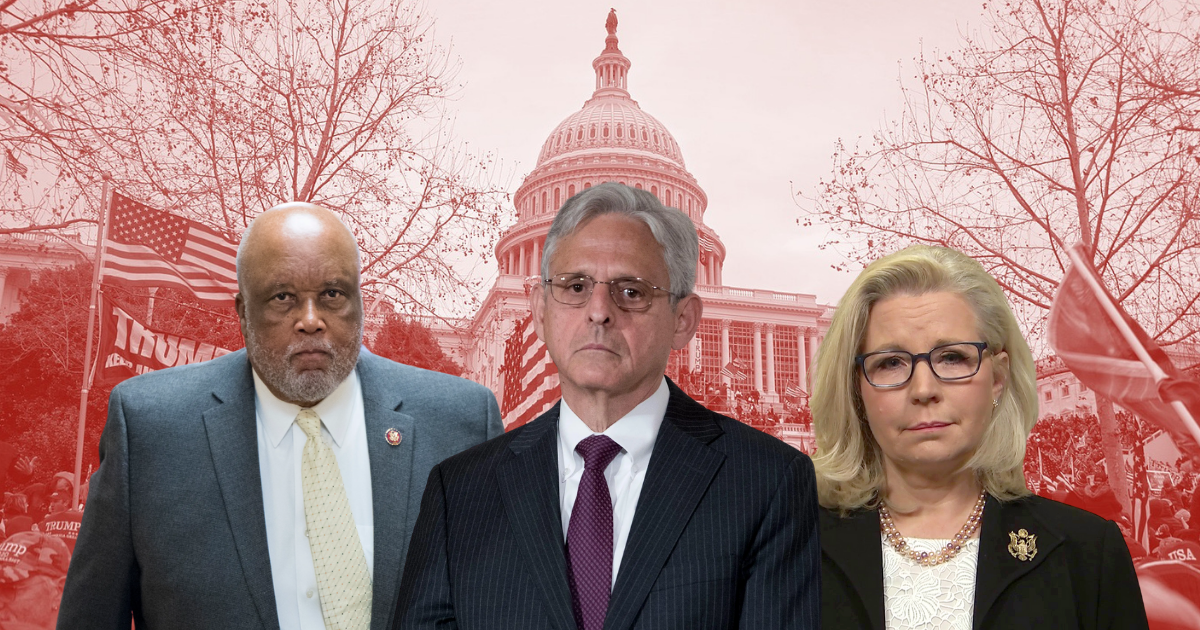More than one year after a pro-Trump mob stormed the Capitol, leaving five dead and 140 police officers injured, the investigation to bring the insurrectionists to justice continues. The FBI and Department of Justice began the effort to arrest and charge those responsible shortly after the insurrection. The House later formed the Select Committee on the January 6 Attack in July after Senate Republicans rejected efforts to form a bipartisan commission. Here’s what you need to know.
The Department of Justice has been fairly lenient – so far
While more than 700 people have been arrested, only about a tenth of them have been sentenced. Of those who have been sentenced, less than half have received jail time. Among those who have received jail time, the median sentence is just 45 days.
There have been outliers. One insurrectionist was sentenced to more than 5 years in prison for assaulting police with a wooden plank and fire extinguisher, the longest sentence handed out so far.
It’s important to note that most of these sentences have been for relatively minor offenses and the most common charge being pleaded to is illegally parading or demonstrating in the Capitol, which is only a misdemeanor. Only twenty defendants have pleaded guilty to felonies so far and most of them have not been sentenced yet. The more serious cases will take time and given the number of defendants charged with crimes like assaulting law enforcement those cases are coming. Furthermore, a little more than 150 defendants out of 700 have entered guilty pleas, and getting the other cases to trial is proving to be a lengthy process, especially with the sheer amount of evidence.
“A necessary consequence of the prosecutorial approach of charging less serious offenses first is that courts impose shorter sentences before they impose longer ones,” said Attorney General Merrick Garland on Wednesday.
Nonetheless, some judges have expressed frustration with the light sentences being meted out in plea deals. While judges can impose harsher sentences than prosecutors recommend, most only do so in rare circumstances.
Texas is the state with the second-highest number of defendants charged in connection with the insurrection; with 66 alleged rioters it’s only behind Florida.
The Select Committee has handed out a lot of subpoenas
While the Department of Justice has pursued the insurrectionists themselves, the Select Committee is going after those who incited the attack. So far they have interviewed over 300 witnesses, obtained more than 30,000 records, and subpoenaed over 50 Trump allies.
Most witnesses have cooperated, but chief strategist Steve Bannon, former Justice Department official Jeffrey Clark, and former White House Chief of Staff Mark Meadows refused to comply with subpoenas (although Meadows did initially turn over 9,000 pages of documents). Congress voted to hold both Meadows and Bannon in contempt, a charge that could result in up to a year in prison.
The committee has recently dropped some major bombshells. On Sunday, Rep. Liz Cheney (R-Wyoming), who vice-chairs the committee, revealed that they had received “firsthand testimony” that Ivanka Trump at least twice asked her father to stop the violence. On Tuesday, the committee revealed text messages showing that Fox News host Sean Hannity was concerned about what Trump was planning on January 6 in the days prior.
The committee is expected to issue an interim report by summer and the final report will come ahead of the November elections. Meanwhile, more public hearings are expected in the coming months as the investigation shifts to a more open phase. While Congress cannot pursue criminal charges itself, they can refer the findings of their investigation to the Department of Justice.
There’s more work to be done
While hundreds of alleged insurrectionists have already been charged, the Department of Justice estimates that as many as 2,500 of them entered the Capitol on January 6. There are still arrests that need to be made and the FBI continues to search for suspects a year later. Their biggest targets include a suspect who left pipe bombs at the Republican and Democratic national committees and remains at large.
Another big question is how high will the investigation go. The Department of Justice is currently prosecuting the actual rioters but there’s still an open question regarding whether they’ll go after Trump’s inner circle as well. And while the Select Committee has subpoenaed some high-profile Trump allies, there are indications they could go after even bigger fish.
The committee is currently trying to get Rep. Jim Jordan (R-Ohio) to cooperate. There’s also the question of whether Mike Pence will be subpoenaed. The former vice president remains ambiguous over whether he’ll cooperate with the investigation although on Thursday Rep. Cheney said she looks forward to cooperation from Pence (his former chief of staff has already talked to the committee). Even Trump himself could be subpoenaed, with Rep. Bennie Thompson (D-Mississippi), who chairs the committee, saying “nobody’s off-limits.”
Although it’s been a year since the attack on the Capitol, there’s a lot more work to be done to determine what happened and hold those responsible to account. The coming year promises some major developments in the investigation into January 6.
William serves as the Washington Correspondent for the Texas Signal, where he primarily writes about Congress and other federal issues that affect Texas. A graduate of Colorado College, William has worked on Democratic campaigns in Texas, Colorado, and North Carolina. He is an internet meme expert.





